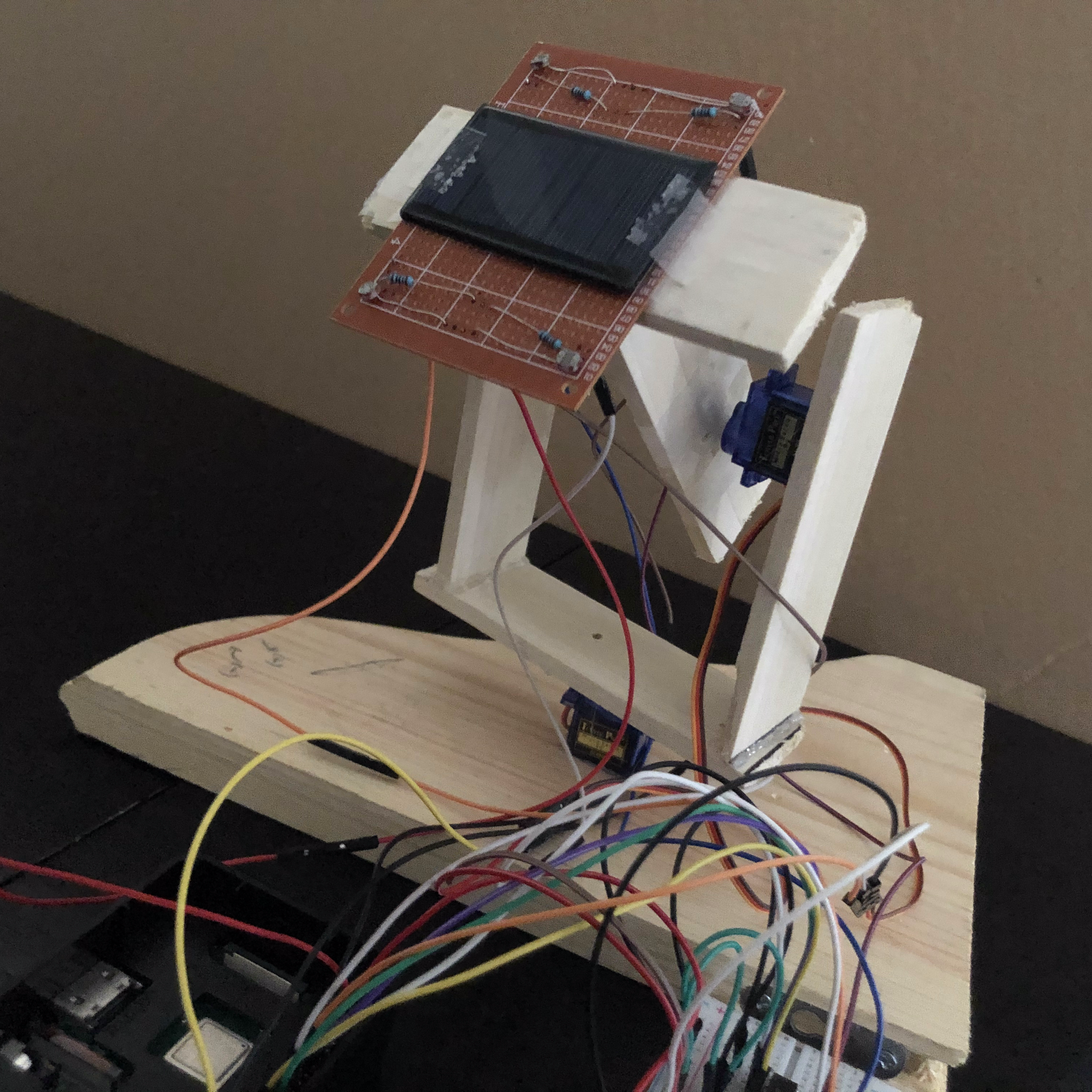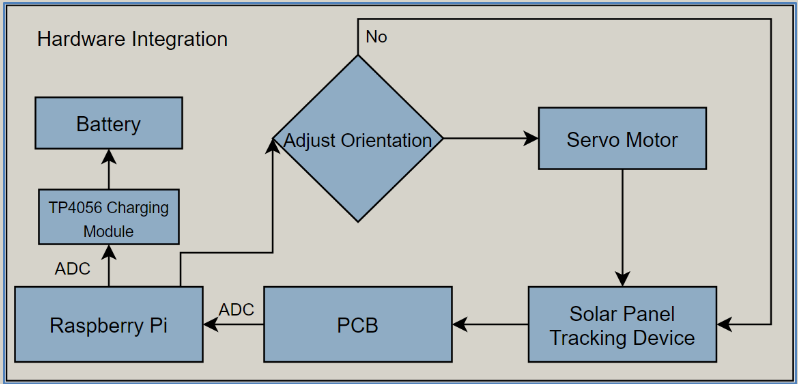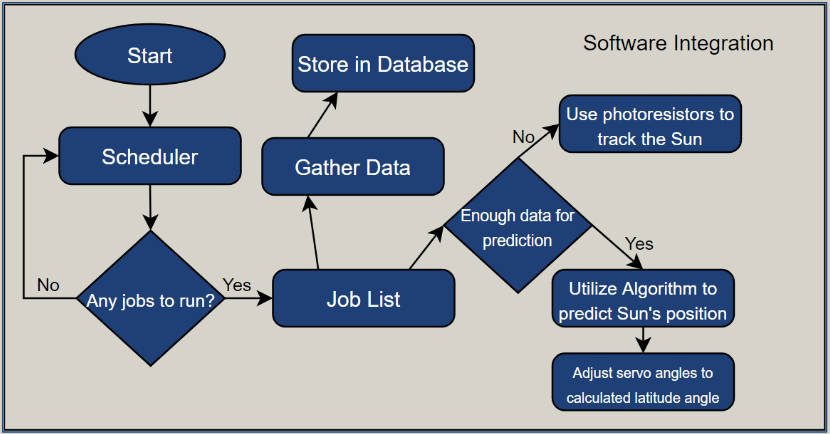

Maximizes solar input

Check out the GitHub repository!
I worked with a team to build a device that follows the direction of the sun and predicts the optimal position in order to absorb the most solar energy. The device was built using a Raspberry Pi, servos, photoresistors, and a solar panel. The energy absorbed is stored in a battery. We utilized a two-axis tracking system that allowed the device to potentially gain 20-35% more solar energy.

The device was mainly programmed using Python. In order to track the brightest source of light, we calculate and compare the averages of the inputs of the four photoresistors. If the top left and top right photoresistors have a larger average value than the bottom ones, the vertical servo moves the head of the device up. If the top left and bottom left photoresistors have a larger average value than the right ones, the horizontal servo moves the head to the left.

We also applied machine learning using scikit-learn to predict the optimal position of the device based on previous data gathered. During certain times of the day, the positions of the servos are recored and stored in a database. A polynomial regression model is then created based on the dataset. The model is used to predict the optimal position of the servos depending on the current time of the day.
